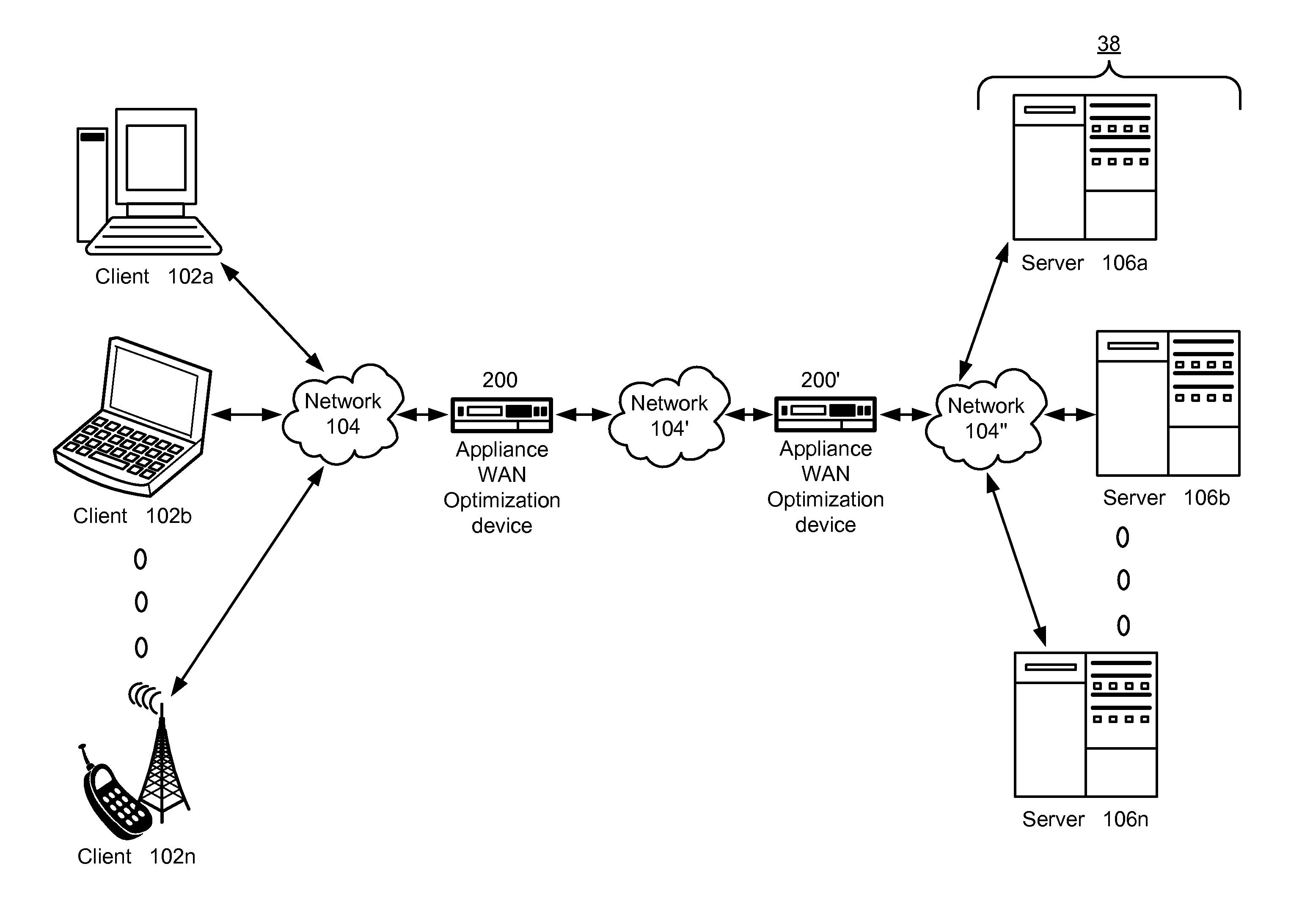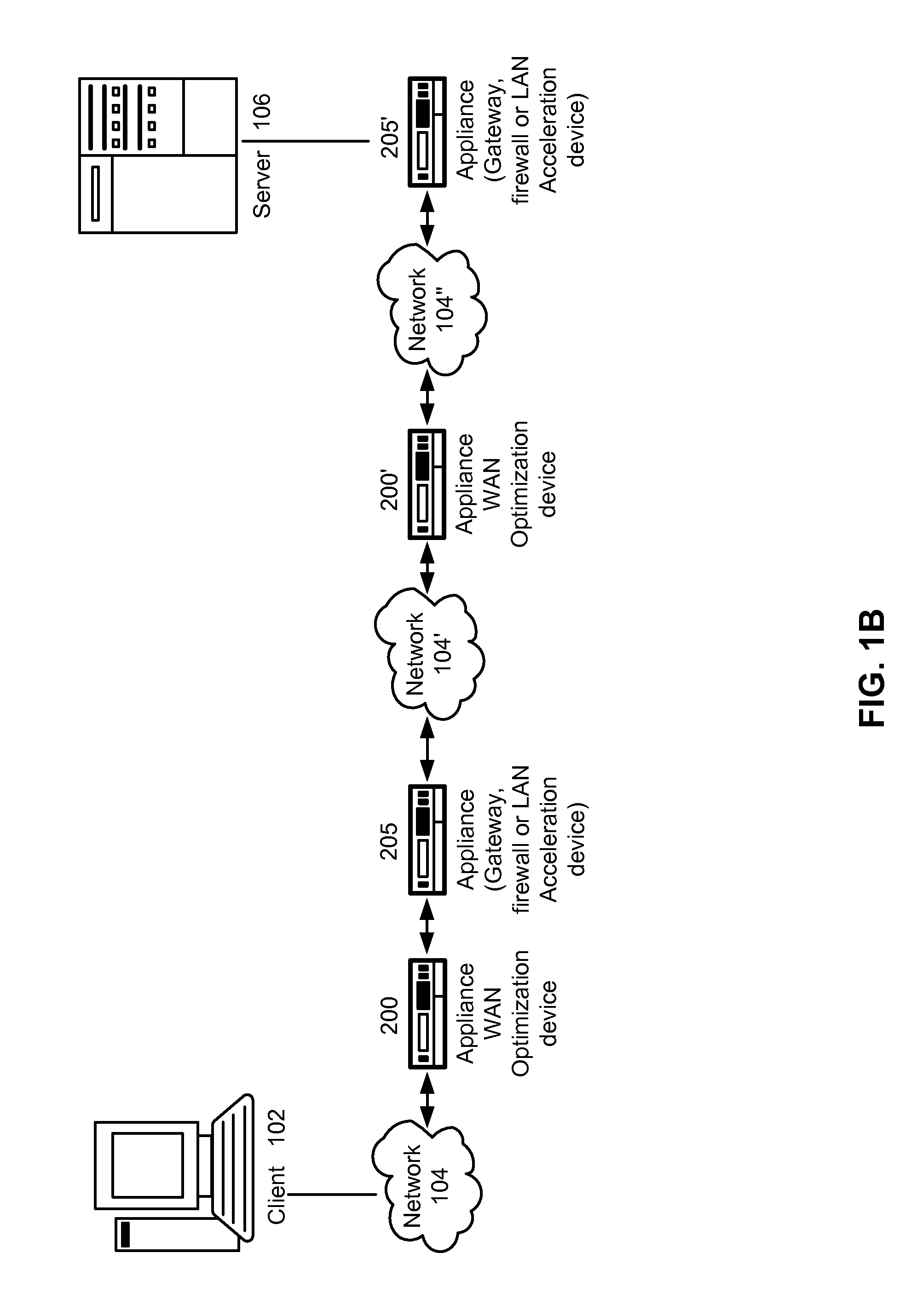Prioritizing highly compressed traffic to provide a predetermined quality of service
a high-compression traffic and priority technology, applied in the field of network optimization, can solve the problems of difficult optimization of wans in this environment, reduced bandwidth use, and still little control over how the available bandwidth is distributed to new or parallel data transmissions, so as to reduce the amount of memory needed, improve network traffic transmission efficiency, and increase the amount of memory available
- Summary
- Abstract
- Description
- Claims
- Application Information
AI Technical Summary
Benefits of technology
Problems solved by technology
Method used
Image
Examples
example 1
[0321]A traffic shaping engine receives data packets obtained by an optimizing appliance. The traffic shaping engine reviews a DSCP mark or other identifying mark on the packets' payload to determine a QoS or class associated with the network packet. Upon determining a QoS and subsequently whether the data packet belongs to a “minimum-latency” traffic class, the traffic shaping engine sorts the queue into traffic identified as requiring a “minimum-latency” and traffic identified as not requiring a “minimum-latency.” For example, VoIP packets transmitted by an enterprise exchange are tagged as “minimum-latency” while VoIP packets transmitted by SKYPE are tagged as “non-minimum-latency.”Upon sorting the queue into “minimum-latency” and “non-minimum latency” traffic, the traffic shaping engine further sorts the queue segments by a timestamp value associated with each data packet. In some instances, the sort uses a first-in-first-out (FIFO) method of placing those packets with the oldes...
example 2
[0322]In one example, audio of a multimedia stream can be transmitted on a separate stream having a high QoS or high service priority level. Each sub-stream can be prioritized according to a priority level determined by the application that generates the data or the data type of the data. An appliance executing a network optimization engine that provides WAN optimization can be used to auto-detect applications that require minimum-latency transmission. Upon automatically detecting these applications and thereby the data generated by these applications, the network optimization engine can provision a separate TCP stream that can be used to deliver the data over a network channel according to a high priority or enhanced QoS. For example, the appliance can provision a separate TCP stream to transmit audio data at a high priority service level. This audio data can be extracted from multimedia data subsequent to identifying that the multimedia data requires a high service level. In some ...
PUM
 Login to View More
Login to View More Abstract
Description
Claims
Application Information
 Login to View More
Login to View More - R&D
- Intellectual Property
- Life Sciences
- Materials
- Tech Scout
- Unparalleled Data Quality
- Higher Quality Content
- 60% Fewer Hallucinations
Browse by: Latest US Patents, China's latest patents, Technical Efficacy Thesaurus, Application Domain, Technology Topic, Popular Technical Reports.
© 2025 PatSnap. All rights reserved.Legal|Privacy policy|Modern Slavery Act Transparency Statement|Sitemap|About US| Contact US: help@patsnap.com



